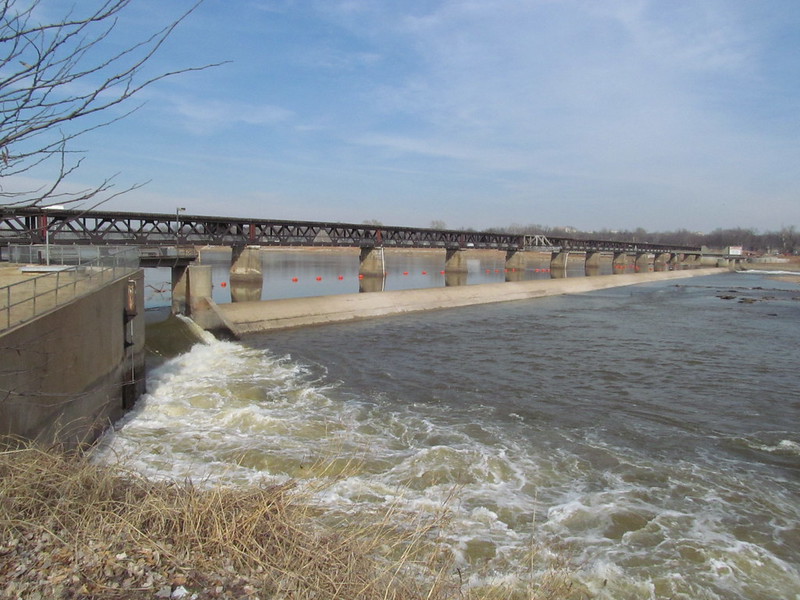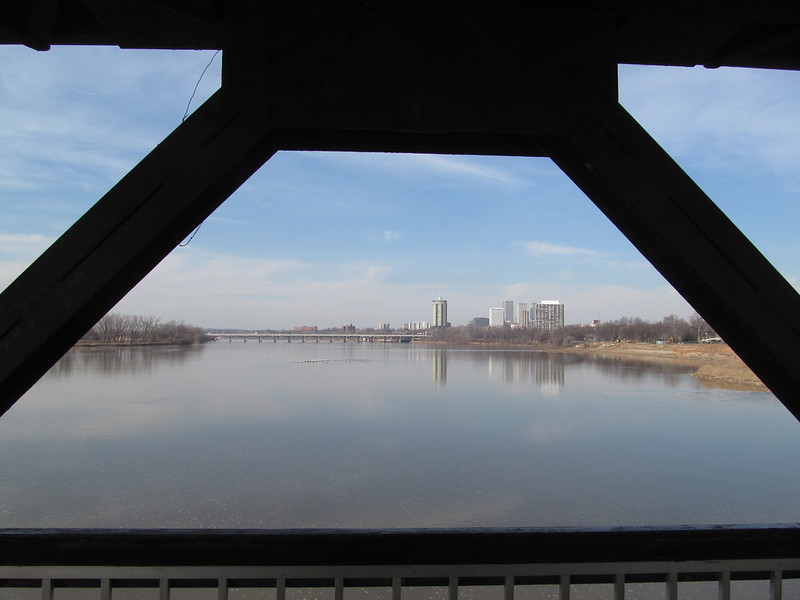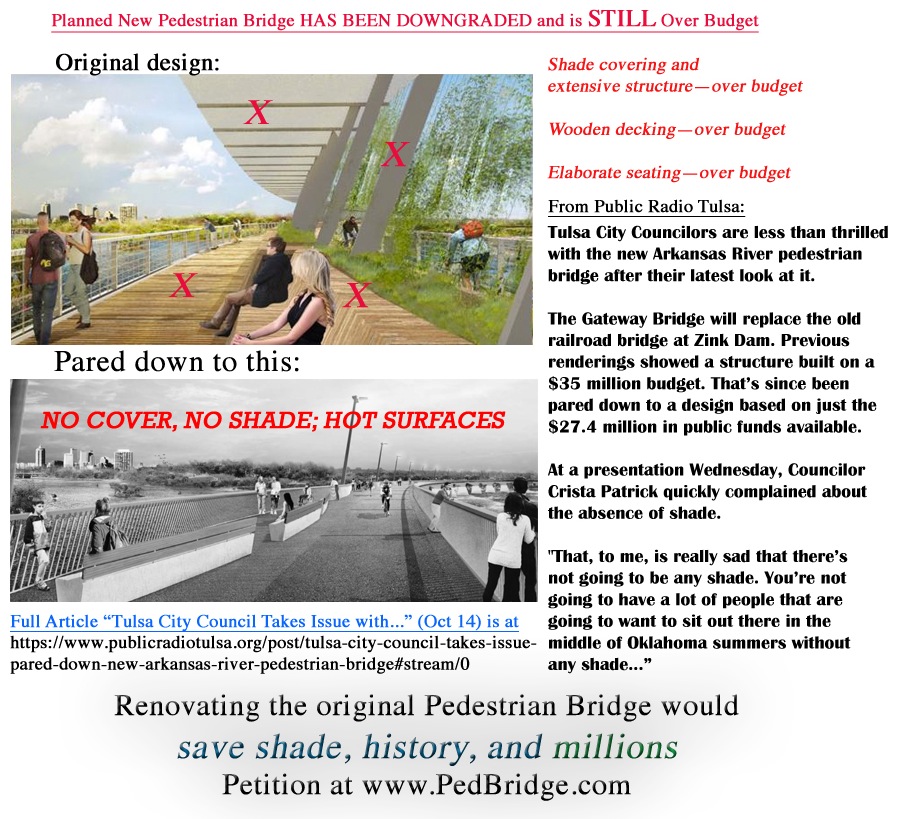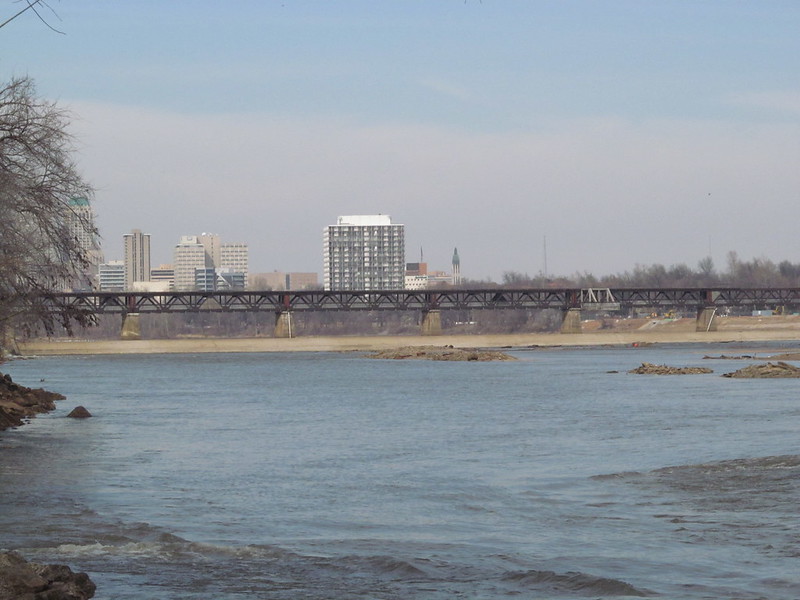December 2020 Archives
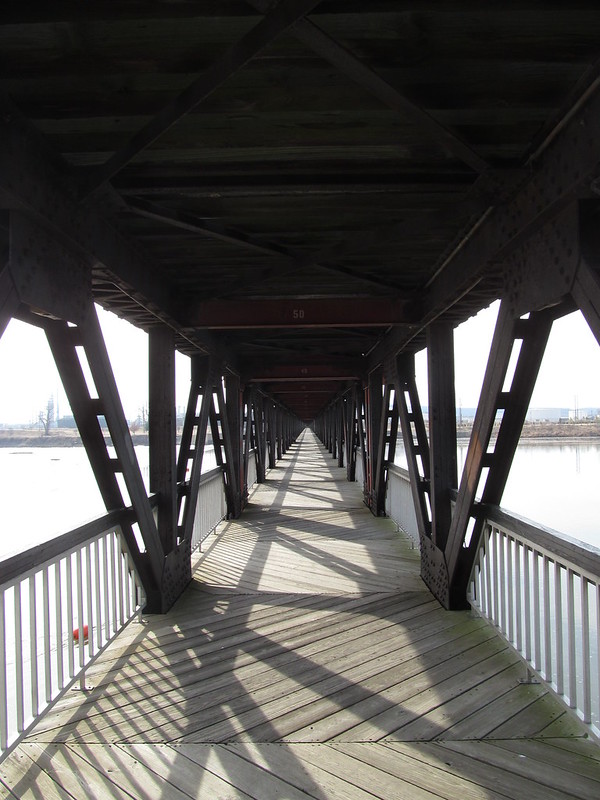
In a recent public letter, Michael Wallis, historian of Route 66, Oklahoma, and the American West, has called on Tulsa government leaders to keep the Midland Valley Pedestrian Bridge over the Arkansas River. Wallis was a member of the advisory committee that considered designs for a replacement for the bridge, but he urges preservation of the historic Midland Valley bridge
Wallis writes that Tulsa's apathy toward historic preservation was apparent even as he and his wife decided to make Tulsa their home in the early 1980s:
In 1980, while working as a Time-Life correspondent, I visited Tulsa and spent almost a week roaming the city. I was impressed by what I encountered.Yet, I came away thinking more could be done to preserve Tulsa's past. It was apparent more attention was needed to highlight the Art Deco architecture, legendary Route 66 and the corridor along the Arkansas River.
Here's the saddest (and the most Tulsa) part of the letter:
At one of our sessions, I said that perhaps we should reconsider removing the pedestrian bridge, if only because of its historic significance.In the end, however, the design was selected that some of us knew from the get-go would be chosen from the start.
This is an experience that countless Tulsa citizens have had on city boards and commissions or in public hearings. Their input is solicited and encouraged, but then promptly discarded, as Tina Nettles learned earlier this year when she and other backyard chicken owners tried to offer their expertise to the framers of a new animal ordinance.
The selected design was presented by Michael Van Valkenburgh Associates, the firm that designed The Gathering Place for the George Kaiser Family Foundation.
Wallis concludes:
I still believe there is a place for the old bridge. We cannot save everything, but we must preserve at least examples of our past.Hopefully, that can happen again.
To make that happen again, sign the petition to save the Midland Valley Pedestrian Bridge at pedbridge.com, then contact the Mayor's office and your city councilor and urge them to stop the demolition of the bridge.
Edited from the version originally published on December 25, 2012
Merry Christmas to anyone who happens by BatesLine today.
As a Holland Hall high school student, I attended and sang in the annual service of Christmas lessons and carols at Trinity Episcopal Church, modeled after the annual Christmas Eve service from the chapel of King's College, Cambridge.
At the beginning of Trinity's service, after the processional, Father Ralph Urmson-Taylor, who served as Holland Hall's Lower School chaplain, would read the bidding prayer. Confessing Evangelical has it as I remember it. It's worth a moment of your time to ponder.
Beloved in Christ, be it this Christmastide our care and delight to hear again the message of the angels, and in heart and mind to go even unto Bethlehem and see this thing which is come to pass, and the Babe lying in a manger.Therefore let us read and mark in Holy Scripture the tale of the loving purposes of God from the first days of our disobedience unto the glorious Redemption brought us by this Holy Child.
But first, let us pray for the needs of the whole world; for peace on earth and goodwill among all his people; for unity and brotherhood within the Church he came to build, and especially in this our diocese.
And because this of all things would rejoice his heart, let us remember, in his name, the poor and helpless, the cold, the hungry, and the oppressed; the sick and them that mourn, the lonely and the unloved, the aged and the little children; all those who know not the Lord Jesus, or who love him not, or who by sin have grieved his heart of love.
Lastly, let us remember before God all those who rejoice with us, but upon another shore, and in a greater light, that multitude which no man can number, whose hope was in the Word made flesh, and with whom in the Lord Jesus we are one forevermore.
These prayers and praises let us humbly offer up to the Throne of Heaven, in the words which Christ himself hath taught us: Our Father, which art in heaven...
The bidding prayer was written by Eric Milner-White, dean of the chapel of King's College, who introduced the Lessons and Carols service there on Christmas Eve 1918. Jeremy Summerly describes the prayer as "the greatest addition to the Church of England's liturgy since the Book of Common Prayer."
In some versions, the prayer for "all those who know not the Lord Jesus, or who love him not, or who by sin have grieved his heart of love" is dropped, perhaps because of political correctness and religious timidity, but they seem to have been restored in recent years. Who needs prayer more than those who reject the Way, the Truth, and the Life?
The phrase "upon another shore, and in a greater light" always gives me goosebumps as I think about friends and family who are no longer with us, but who are now free from pain and delighting in the presence of the Savior they loved so dearly in this life. As he wrote those words, Milner-White, who had served as an army chaplain in the Great War before his return to King's College, must have had in mind the 199 men of King's and the hundreds of thousands of his countrymen who never returned home from the trenches of Europe.
Which brings us to the final verses of the Epiphany hymn, "As with Gladness, Men of Old", which describes "another shore" as "the heavenly country bright":
Holy Jesus, every day
Keep us in the narrow way;
And, when earthly things are past,
Bring our ransomed souls at last
Where they need no star to guide,
Where no clouds Thy glory hide.In the heavenly country bright,
Need they no created light;
Thou its Light, its Joy, its Crown,
Thou its Sun which goes not down;
There forever may we sing
Alleluias to our King!
MORE:
This year's broadcast of the Festival of Nine Lessons and Carols from King's College Cambridge marked its 102nd anniversary in this year of Covidtide by recording the service in advance. You can listen to the service for the next four weeks on the BBC Sounds website. King's College is allowing worldwide download of this year's edition of "Carols from Kings," a video-recorded program from the chapel which includes some elements of the Lessons and Carols service but is not identical to it. A cappella classical sextet the King's Singers pinch hit this year for adult members of the chapel choir who were exposed to the CCP Bat Virus.
You can download the booklet for the service here. (Direct link to PDF.)
The history of the Lessons and Carols service was presented in this 15-minute BBC program, Episode 8 of the series "A Cause for Caroling." (Unfortunately, it was not repeated this year, so you can't listen online at the moment, but it's available through Audible and as an audio CD.) Edward White Benson, first Bishop of Truro, originated the service of Nine Lessons and Carols in 1880. It was published in 1884 and began to be used more widely. From the 2018 service booklet:
The 1918 service was, in fact, adapted from an order drawn up by E. W. Benson, later Archbishop of Canterbury, for use in the large wooden shed which then served as his cathedral in Truro at 10 p.m. on Christmas Eve, 1880.A. C. Benson recalled: 'My father arranged from ancient sources a little service for Christmas Eve - nine carols and nine tiny lessons, which were read by various officers of the Church, beginning with a chorister, and ending, through the different grades, with the Bishop'. The idea had come from G. H. S. Walpole, later Bishop of Edinburgh.Very soon other churches adapted the service for their own use. In the immediate aftermath of the First World War, Milner-White decided that A Festival of Nine Lessons and Carols would be a more uplifting occasion at King's than Evensong on Christmas Eve. He used Benson's plan, but wrote the now-classic Bidding Prayer to set the tone at the beginning. Since then the spoken parts, which provide the backbone of the service, have only occasionally changed.
MORE: John Piper explains what Christmas is all about in 115 words:
Christmas means that a king has been born, conceived in the womb of a virgin. And this king will reign over an everlasting kingdom that will be made up of millions and millions of saved sinners. The reason that this everlasting, virgin-born king can reign over a kingdom of sinners is because he was born precisely to die. And he did die. He died in our place and bore our sin and provided our righteousness and took away the wrath of God and defeated the evil one so that anyone, anywhere, of any kind can turn from the treason of sin to the true king, and put their faith in him, and have everlasting joy.
STILL MORE:
At her blog, A Clerk of Oxford, Eleanor Parker has written a great many articles about the Anglo-Saxon commemoration of the Christian year. This Twitter thread and this blog entry will lead you to a series of articles on the "O Antiphons," the Latin poems of praise to Christ that are read at vespers over the week prior to Christmas day, each one naming a title of Christ reflecting a different aspect of His glory -- Wisdom, Lord, Root of Jesse, Key of David, Dayspring (Morning Star), King of Nations, and Emmanuel (God with us).
Her essay from 1st Sunday in Advent reflects on Advent, Christmas, and time, on this year's lack of holidays, the impossibility of "pressing pause" on life, the origins of Christmas and claims of cultural appropriation, the emotional impact of the season. A worthwhile ramble on a gray day. It's all worth reading, but this passage stood out to me, and it cites that wonderful phrase from the bidding prayer that undoes me every year:
The British festival year used to involve numerous seasons and holidays when people could gather together, in extended families and in local communities; now for many people in that 90% it's almost all concentrated on Christmas, and that's a lot of pressure. Of course advertisers exploit that pressure for their own ends, so many of us have a vision in our heads of the 'perfect family Christmas' which may bear little or no relation to how we have actually experienced the season. (I'm sure the journalists are attacking the imaginary advertisers' Christmas more than anything they've seen in real life.)It's typical of the modern Christmas, most of all in its focus on family and childhood, that it leads people to places of strong emotion, both good and bad. Whether your memories of childhood Christmas are happy or unhappy ones, when Christmas comes round there's no escaping them. Whatever your family is or isn't, or whatever you want it to be, this is the time when you are insistently pushed to think about it and to compare yourself to others. Any sense of loss or deficiency in the family is made worse by the contrast with images of other apparently perfect families, or by remembering past happiness, or imagining what could or should be. Grief is harder. Absences are more keenly felt. It's a season when one phrase or one note of a song can open floodgates of emotion, calling forth profound fears, griefs, and longings which in ordinary time we might manage to contain. Christmas used to be a season of ghost stories, and it's certainly a time when it's hard not to be haunted by memories - even happy memories, of 'those who rejoice with us, but on another shore and in a greater light'.
You can call that sentimental, or irrational, but it's very powerful all the same. And it's no coincidence - of course it isn't - that this is all intensified because it takes place at midwinter, when the days are very short and the nights very long; when the weather is cold and hostile; when light is lowest, and the shadows longest. There's a reason we call this season 'the dead of winter', with all the sterility and hopelessness that implies. That makes the Christmas brightness all the brighter, or the darkness all the darker - the lights and the warmth and the company all the more welcome, or their absence all the more painful.
It's a bleak and lonely and isolating time of year, at the best of times; and these aren't the best of times. How much more endless the empty evenings seem now in November than they did in April, now they begin at four o'clock in the afternoon! The 'it's just one day' people can go on saying that as much as they like, but this particular day, after nine months of isolation or separation from family, is going to be hard for a lot of people.
Just remember: If you didn't fulfill every Christmas tradition you wanted to honor, give every gift you wanted to give, sing every carol on or before December 25, there are still eleven days of Christmas remaining!
RELATED: Tom Holland writing in Unherd on The Myth of Pagan Christmas. Holland takes us back to the Christmas feast at the court of King Athelstan in Amesbury in 932, and looks back from there to the idea of measuring time from the birth of Christ:
Bede, more clearly than any Christian scholar before him, had recognised that there was only the one fixed point amid the great sweep of the aeons, only the single pivot. Drawing on calendrical tables compiled some two centuries earlier, he had fixed on the Incarnation, the entry of the divine into the womb of the Virgin Mary, as the moment on which all of history turned. Years, by Bede's reckoning, were properly measured according to whether they were before Christ or anno Domini: in the year of the Lord. The effect was to render the calendar itself as Christian. The great drama of Christ's incarnation and birth stood at the very centre of both the turning of the year and the passage of the millennia. The fact that pagans too had staged midwinter festivities presented no threat to this conceptualisation, but quite the opposite. Dimly, inadequately, gropingly, they had anticipated the supreme miracle: the coming into darkness of the true Light, by which every man who comes into the world is lit.
He concludes with this:
This year of all years -- with a clarity denied us in happier times -- it is possible to recognise in Christmas its fundamentally Christian character. The light shining in the darkness proclaimed by the festival is a very theological light, one that promises redemption from the miseries of a fallen world. In a time of pandemic, when the festive season is haunted by the shadows of sickness and bereavement, of loneliness and disappointment, of poverty and dread, the power of this theology, one that has fuelled the celebration of Christmas for century after century, becomes easier, perhaps, to recognise than in a time of prosperity. The similarities shared by the feast day of Christ's birth with other celebrations that, over the course of history, have been held in the dead of winter should not delude us into denying a truth so evident as to verge on the tautologous: Christmas is a thoroughly Christian festival.
In 1966 and 1967, a trio of researchers, Glenn White, Bob Healy, and Bob Pinson, published a series of articles in Record Research: The Magazine of Record Information and Statistics, covering the life and career of Bob Wills and His Texas Playboys. The introduction to this four-part series mentioned that the effort had begun in 1959. A refined version of the discography, updated to include Bob's recording sessions with Kapp Records, the recording session at Merle Haggard's housewarming, and "For the Last Time," was included as an appendix in San Antonio Rose, Charles Townsend's biography of Bob Wills. The San Antonio Rose version, however, does not include the details about the Tiffany recordings that you'll find here.
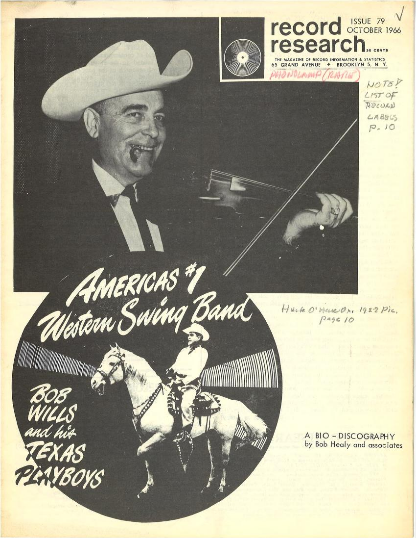
These issues are now available on the Internet Archive:
Record Research 79: October 1966: Part 1 covers Bob Wills's biography and early career through the end of World War II, with the list of movies Bob and his band appeared in, the list of their appearances on Armed Forces Radio Service (AFRS), photos in their songbooks.
Record Research 80: November 1966: Part 2 lists the music on the official Tiffany Transcriptions discs, as well as some unissued songs on the legendary "bus driver tapes"; traces the changes in personnel over the course of the late '40s and 1950s, based on recordings of dances and air-shots. There is tantalizing mention of 25 hours of KVOO air-shots recorded by Ed Wilson of Memphis, Texas (not far from Bob's hometown of Turkey) in 1940. This was the lineup that recorded "New San Antonio Rose"; what I would give for a time machine to hear them live!
Tom Diamant's Tiffany Transcriptions website has a more detailed discography session by session. Diamant and Jeff Alexson were the founders of Kaleidoscope Records which issued these wonderful recordings commercially for the first time in the 1980s. He has kindly provided a page with links to YouTube versions of all the Tiffany Transcriptions tracks issued by Kaleidoscope.
Record Research 81: January 1967: Part 3 lists some additional sidemen who were known or thought to have been in the Texas Playboys, lists the personnel for the bands of Johnnie Lee Wills, Luke Wills, and Billy Jack Wills, and has an intriguing paragraph about the Bob Wills's sale of the Texas Playboys in 1964:
In August, 1964, Bob sold the rights to THE TEXAS PLAYBOYS to Carl Johnson of Ft. Worth. Disagreements resulted in a separation, and Bob formed a new band without the Texas Playboy monicker. The organization is now known as BOB WILLS AND HIS BOYS. Leon Rausch took over the Texas Playboys.
Record Research 82: February 1967: Part 4 presents the discography of Bob Wills and His Texas Playboys for Columbia, MGM, Decca, Liberty, and Longhorn, with personnel for each session, mentioning at the end that Bob recorded for Kapp Records in 1966.
Record Research, which was founded by Leonard Kunstadt and published from 1955 to 1995, contains the sort of discographical information that these days is accumulated on blogs or wikis. (For example, the excellent and ongong Praguefrank's Country Music Discographies. Here's the original Praguefrank discography site.) The Internet Archive has the entire forty-year print run of Record Research available online. It's fascinating to browse as an example of self-publication by a passionate amateur, using a typewriter and scissors and paste to assemble a magazine. Here is the very first issue, from February 1955, which included a Eubie Blake discography, an article about Edison cylinders, and a commitment to be "a magazine built on discographical craftsmanship." The final issue, No. 253/254, was published in January 1995, using the same format, and included the third part of a series on Daugherty, Oklahoma-born Big Band singer Kay Starr.
I found this because I was curious about the fiddlers on the Eldon Shamblin 1979 solo album Guitar Genius. There are some Stephane Grappelli-inspired licks on the album. I knew Curly Lewis from the Johnnie Lee Wills band and that he was an admirer of Grappelli's jazz fiddle work, but I hadn't heard of Gary Hutton, and when I searched for his name, one of the Record Research issues containing the aforementioned Bob Wills discography mentioned Hutton as a possible Bob Wills sideman.
Recently I've returned to the habit of reading a book before bedtime and when eating on my own, leaving aside the digital device and focusing my attention on the printed page. In the past few weeks I've finished Calvin Coolidge's autobiography, Arnold Dallimore's biography of Charles Haddon Spurgeon, a short book collecting Spurgeon's controversial writings calling attention to theological liberalism among British Baptists and Congregationalists (known as the "Down-Grade Controversy"), and started into The Federalist Papers, with an introductory essay by Garry Wills.
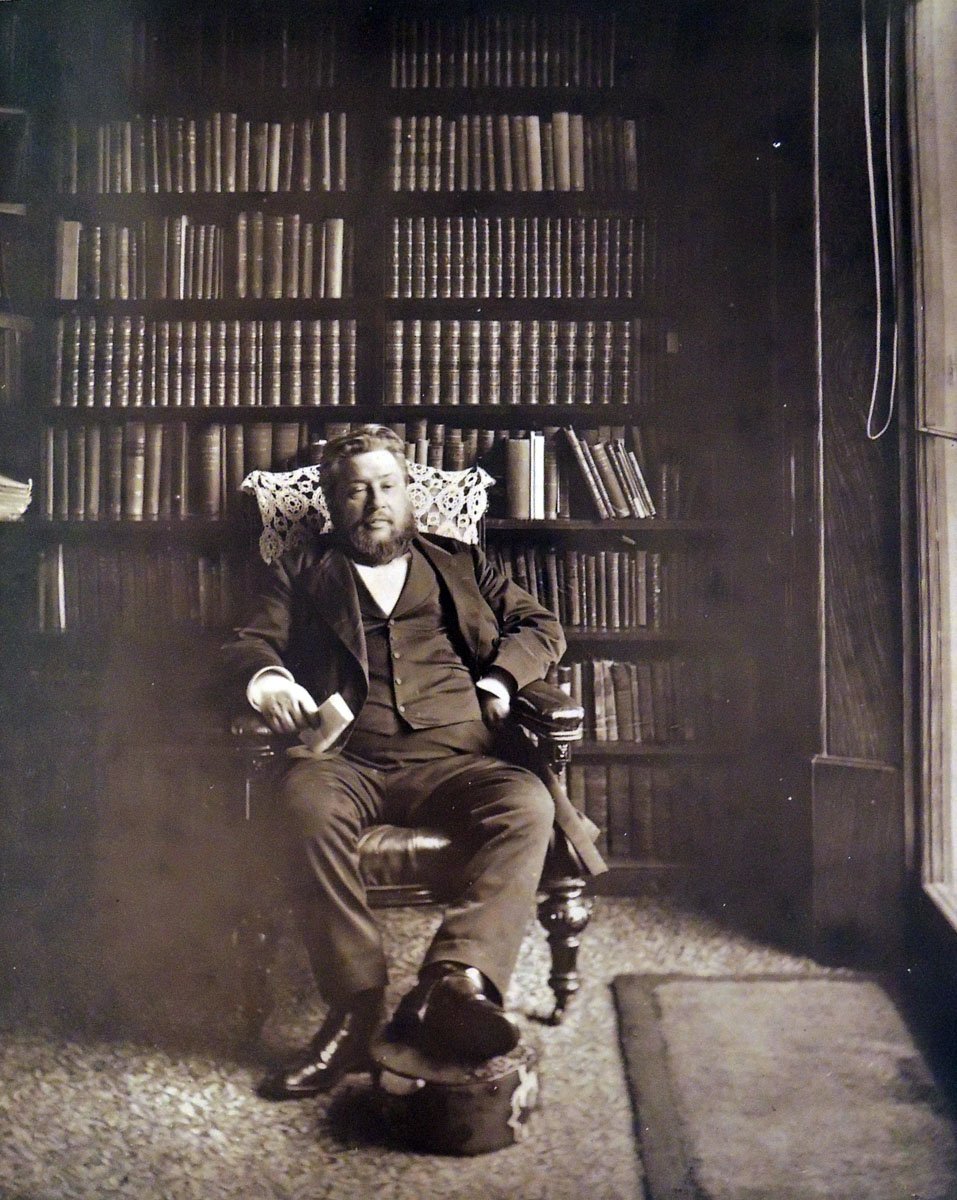 Charles Haddon Spurgeon in his study, 1882, age 48
Charles Haddon Spurgeon in his study, 1882, age 48Charles Haddon Spurgeon (1834-1892) might be considered the first of the megachurch pastors. A Baptist of Calvinist convictions, he was gifted with a prodigious memory, a quick verbal wit, and, most importantly, a godly heritage by way of his grandfather and father, both Independent (Congregational) ministers of the Puritan persuasion. He began at age 16 as preacher and pastor of a Baptist chapel in Waterbeach, Cambridgeshire, then was called to serve as pastor of the historic New Park Street Chapel in Southwark, in greater London, at age 20. His congregation quickly grew to thousands, overflowing the building, requiring a move first to Exeter Hall in the Strand while the church was being enlarged, then to the Surrey Gardens Music Hall, and ultimately to a new facility, the 6,000-seat Metropolitan Tabernacle near Elephant and Castle in Newington, now in the London Borough of Southwark. In addition to preaching twice on Sunday and on other occasions through the week, Spurgeon edited and wrote essays and book reviews for a monthly magazine, The Sword and Trowel, founded an orphanage, founded and taught at a pastor's college, and initiated many other missions and ministries under the auspices of the church.
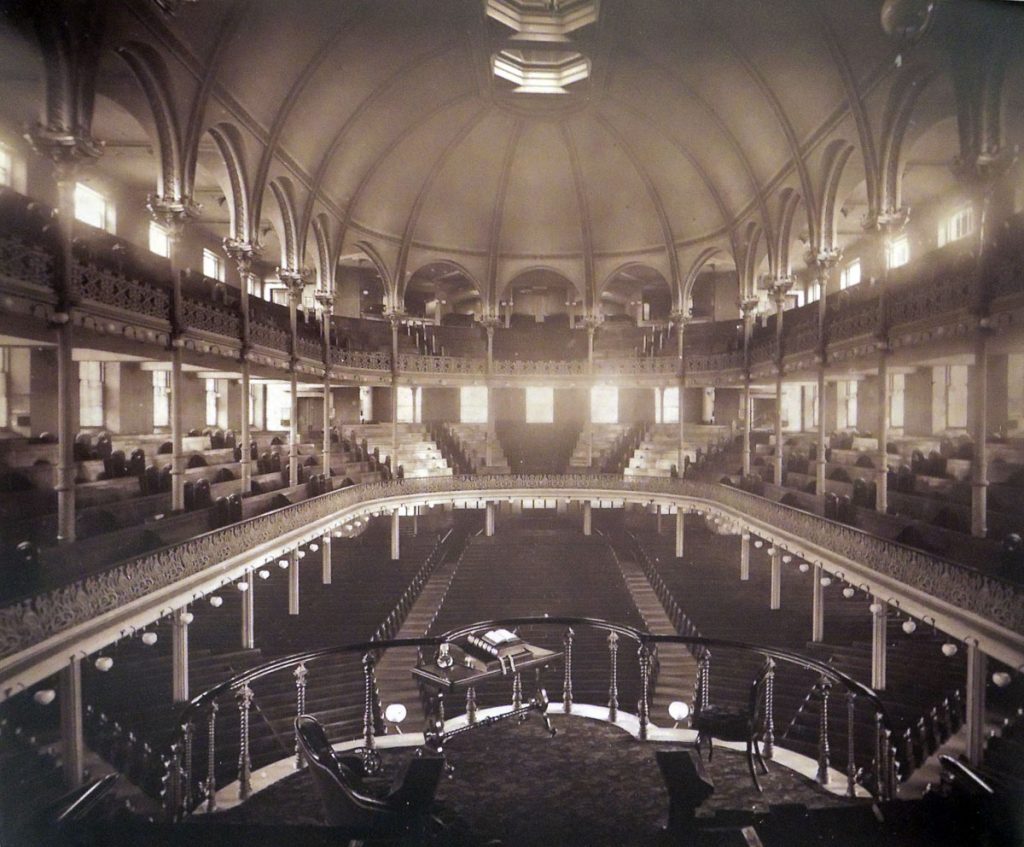 A view of the Metropolitan Tabernacle from the pulpit, 1882
A view of the Metropolitan Tabernacle from the pulpit, 1882During my time in the south of England two years ago, I worshipped on a few occasions at the Metropolitan Tabernacle, which is still faithfully proclaiming the same gospel that Spurgeon preached in the same straightforward and unadorned way. Although the auditorium is much smaller than in Spurgeon's time -- it took a direct hit during the Blitz and was rebuilt after the war; the Greek Revival portico survived the attack -- every seat was filled, and the congregation was diverse in ethnic background and age. There seemed to be far more non-English faces than English faces in the congregation. No fog machines or colored lights. After a few hymns accompanied by organ, the congregation heard an expository sermon from Dr. Peter Masters or one of his associates. Masters marked his golden anniversary as senior pastor this November.
My curiosity about Spurgeon was rekindled by an item recently posted to social media summarizing his busy but productive weekly schedule, a summary of this passage in Volume 2 of the Autobiography. I pulled Arnold Dallimore's 1985 concise biography of Spurgeon off of the shelf and got through it in a few days, which only whetted my appetite to read more of his own work and to learn more of his life and times. As Spurgeon's opus is entirely in the public domain, there is a wealth of his work available online.
Spurgeon is very accessible to modern readers. Although there will be unfamiliar cultural references, and there have been shifts in meaning for some words, these are not barriers. Spurgeon writes with a warmth and wit that reaches the reader even when difficult subjects are in view.
Major repositories of Spurgeon's work:
Spurgeon's Morning and Evening: His daily devotional, presented in blog form.
The Spurgeon Archive: A selection of Spurgeon sermons and essays and essays about Spurgeon, curated by Phil Johnson, associate pastor of Grace Community Church in Los Angeles. There is a large collection of interesting items from Spurgeon's writing in The Sword and the Trowel, many of them reflecting Spurgeon's sense of humor.
- Spurgeon's account of an 1867 visit to Heligoland (then a British possession off the coast of Germany): Johnson calls "surely the best and funniest of Mr. Spurgeon's travelogues."
- A chapter of the Autobiography devoted to fun
- A caricature and sketch of Spurgeon from Vanity Fair
- Spurgeon's frustration with requests from aspiring blank-verse poets to read and find publishers for their work
- Free advice, including Spurgeon's opinion on the proper length of a sermon
- Spurgeon's love of fine cigars, which he "smoked to the glory of God"
Reformed Reader: Spurgeon collection, which includes his monumental multi-volume commentary on the Psalms, The Treasury of David, arranged for web navigation, and The Down-Grade Controversy: All of the essays, notes, and excerpts from The Sword and the Trowel, the Metropolitan Tabernacle Pulpit, and the Autobiography that are contained in Pilgrim Publications' little book of the same title.
The Spurgeon Center for Biblical Preaching at Midwestern Baptist Theological Seminary: The seminary is home to Spurgeon's personal 6,000 book library (formerly at William Jewell College, acquired for $3,000 in 1905), which is being digitized along with his annotations.
Spurgeon Gems: All 3,563 of Spurgeon's published sermons, with audio recreations of many sermons, books in PDF and plain text format, a collection of prayers by Spurgeon, notable quotes, and materials in Spanish.
Internet Archive collection of works by or about Spurgeon
Spurgeon in print:
Pilgrim Publications, Pasadena, Texas, which reprints facsimile versions of all of Spurgeon's works.
Banner of Truth Trust publishes modern editions and anthologies of Spurgeon's writing, including the Autobiography, a collection of letters, edited with commentary from Iain Murray, and Dallimore's biography.
Susie, The Life and Legacy of Susannah Spurgeon, is due out from Moody Press early next year (2021).
Contemporary biographies of Spurgeon in the public domain:
Shortly after Spurgeon's death, his wife Susannah and his private secretary, J. W. Harrald, assembled a four-volume Autobiography from his diaries, sermons, letters, and notes:
Volume 1, 1834-1854 Reformed Reader: Descriptions of life at Westwood from Susannah Spurgeon's book fund reports from Russell H. Conwell's Life of Charles Haddon Spurgeon, The World's Great Preacher. Other items of interest:
Volume 2, 1854-1860
Volume 3, 1860-1878
Volume 4, 1878-1892
From the Oklahoma Taxpayer Alliance, news on the vindication of the late Owasso City Councilor Patrick Ross in his fight to release a report investigating alleged wrongdoing by City Manager Rodney Ray, whose 20-year tenure ended in 2013 under an ethical cloud but with a hefty severance package from the City Council. Posted here with their permission:
THE OKLAHOMA STATE SUPREME COURT RULED...PATRICK ROSS WAS RIGHT
In August 2013 then city councilor Patrick Ross filled a lawsuit against the City of Owasso for refusing to release the "Fortney Report" which was an investigation into the alleged criminal actions of former city manager Rodney Ray. In 2017 District Court of Tulsa County ruled in the city's favor. Mr. Ross then appealed this decision to the Court of Civil Appeals.
On April 30, 2020, a three-judge panel from the Court of Civil Appeals unanimously ruled that the "Fortney Report" concerning the investigation of former city manager Rodney Ray shall be released and made public.
The judges who sat for this hearing were Judge Thomas Thornbrough (Presiding Judge), Special Judge John Reif and Judge Jane Wiseman. Special Judge Reif served on the Oklahoma State Supreme Court from 2007-2019 and was the Chief Justice for the Supreme Court from 2015-2016.
In their fourteen-page ruling the judges not only explained why the report was not an internal personnel matter protected from being made public by the Open Records Act (ORA) but they also spent time reviewing why Mr. Ray was paid a severance package in violation of his employment contract.
WE FLATLY DISAGREE
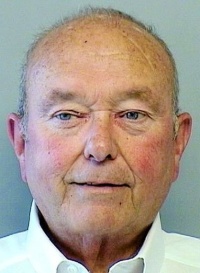
Rodney Ray
Owasso City Manager
1985-1998, 2001-2013
THE LEGITIMACY OF THE MAYOR AND CITY COUNCIL
In closing the judges stated "The balance of this case clearly favors disclosure. The ORA request is evidently not one motivated by mere curiosity into a personnel matter, or some general desire to broadly monitor the workings of government. It involves a high profile employee in an official position, not routine day-to-day personnel employment matters. It involves specific questions of why the City Manager, who was accused of misconduct, was granted a substantial severance package, paid for by the taxpayers of Owasso, instead of being fired. In short it is a 'core' Open Records matter going directly to the questions of the legitimacy of the Mayor and City Council's good governance and use of funds, and the citizens' inherent political power to inquire into these matters. City identifies no valid privacy, state, or public interest in withholding the Report. As such, we find that it should be disclosed pursuant to the ORA."
Following the Appeals Court ruling the city appealed the verdict to the Oklahoma State Supreme Court. On November 17, 2020 after reviewing the Court of Civil Appeals ruling the Oklahoma State Supreme Court choose to allow the Court of Civil Appeals ruling to stand.

Patrick Ross
Owasso City Councilor
2011-2014
Many folks over the years have voiced their opposition to Mr. Ross's actions with his lawsuit and he was dragged through the social media mud for doing so. His character and reputation were attacked and he was labeled with numerous slanderous names.
He and his wife spent thousands of their own dollars in attorney fees in order for this fight to continue. Mr. Ross believed in what he was doing and he knew he was on the right side of the law.
If you care anything at all about your government, at any level you should be very thankful for this ruling. It stands at the very foundation of any government agency being transparent about how they spend YOUR tax dollars. Without this type of ruling any government agency could have a free ride at spending taxpayer dollar without any citizen oversight.
We live in a nation where everyone has the right to their own opinion and to be able to state that opinion. And if you feel your rights have been violated, you have the ability to take your case to court to air your grievances and seek justice. Mr. Ross did just that and the courts agreed with him.
Our founding fathers fought with their lives and fortunes in order to bring about this great nation. They left us with a constitution that allows "We the People" to hold government accountable. At a young age Mr. Ross fought for this nation in the US Navy in Vietnam. He continued fighting for his community as a city councilor. And after he was no longer on the city council he continued to use his own money to fight for honest and transparent government.
Makes you wonder what kind of city, state or nation we would have if more people were like Patrick Ross and felt strong enough about honest and transparent government to make a stand and fight...no matter if no one else was fighting with them.
Patrick Ross was a true American warrior and patriot. We could use more people like him.
Court docket files:
- Tulsa County CV-2013-898: Ross v. City of Owasso, the initial suit brought by Councilor Ross to make the Fortney Report available to the public under the Open Records Act.
- SD-115210: Three-judge appellate panel determined that the case would not yet be ripe until the City Council, not just a city employee, rejected Ross's Open Records Act request. Here is the decision in that appeal.
- MA-117599: Appeal to the Oklahoma Supreme Court by one of the defendants
- SD-117321: Appeal by Patrick Ross following the Owasso City Council's action to deny Ross's Open Records Act request.
This is big, but justice delayed is justice denied. It's ridiculous that the process took over seven years to reach a conclusion, during which time the voters of the City of Owasso have been denied an opportunity to evaluate the way their elected representatives handled the accusations of wrongdoing on the part of the longtime City Manager.
(In 2013, Freedom of Information Oklahoma head Joey Senat described Ross's original lawsuit and the abuse of the Open Records and Open Meetings Acts by the pro-Ray majority on the Council alleged in the complaint.)
It took seven years through the courts to reach a fairly tentative decision on whether citizens should know about possible malfeasance by the City Manager and to decide whether the the City Council majority's decision to give him a fat severance package was justifiable or a travesty of justice. In the meantime there have been two full cycles of City Council elections. Owasso Taxpayer Alliance points out that two members of the Council that denied Ross's Open Records request still sit on the Owasso City Council: Doug Bonebrake and Chris Kelley. Ray's internal memo ordering the deletion of video of a police traffic stop of Chris Kelley for suspected DUI was one of the actions that led to his departure as City Manager.
The exemptions in the Open Records and Open Meetings Act for personnel matters are there to protect the clerk who processes your water bill and the worker who fills potholes, the same sort of people who are under Civil Service protections. They exercise little discretion in the conduct of their jobs, and they set no policies.
The Oklahoma Supreme Court voted 6-2 to deny certiorari, and although I'm glad for Carole Ross, the widow of Patrick Ross, that the case is over, I wish the Supreme Court had heard the case. The two dissenting justices, John Kane and Dustin Rowe, questioned the balancing test that was applied by the Court of Civil Appeals panel. Without a Supreme Court ruling on when municipalities must disclose personnel records involving executive city officers, there isn't a precedent on which citizens and municipal governments can rely in the future. The opinion of the Civil Appeals Court has not been published, although the ruling is available through the case docket.
There is a clear distinction to be made between public employees who have limited or no discretion and those who serve in an executive capacity, setting policy and direction for a public body. For officials in the latter category -- city managers, school superintendents, library directors, city attorneys, directors of city departments, and others with executive responsibilities -- their administration (or maladministration) of their duties are matters of clear public interest, and the Legislature should amend the Open Records Act and the Open Meetings Act to reflect this fact, by mandating that personnel records for these officials must be made public and discussions concerning their performance must be held in open session of the relevant council or board.
A clue to the level of executive discretion enjoyed by Rodney Ray: This 2008 snapshot of his page on the City of Owasso website included his State of the City address and the City Manager's vision for Owasso government. That's the sort of thing a Head of State puts out, not a menial functionary.
When I was in college, I worked on a research project for MIT's Urban Planning department. We were investigating the impact of a Massachusetts initiative (Proposition 2 1/2) to limit property tax on municipal government, traveling to different cities and towns to interview local officials about how they were coping. On one of our visits, we had a brief meeting with the uncrowned king of Worcester, Mass., Francis J. McGrath, who was nearing the end of his 34 years as City Manager of the second largest municipality in the Commonwealth. When we were allowed to enter, it was like walking into a throne room. McGrath's longevity seems linked to the public works projects he shepherded, the typical post-war redevelopment that scraped historic neighborhoods and replaced them with highways and new brutalist public facilities, and to his carefully cultivated relationship with the monopoly local newspaper. In the minds of some who served with him, McGrath's successors as city manager have been more openly autocratic and dismissive of the elected city councilors, who appear to have become complacent and passive during McGrath's tenure.
The most powerful man in New York City from the 1930s through the 1960s, Robert Moses, never held an elective office. He was City Parks Commissioner and Chairman of the Triborough Bridge and Tunnel Authority, among many other roles, all of them appointed. Surely personnel actions involving someone able to decide the routes of expressways and to clear neighborhoods for public housing are a legitimate matter of public interest and ought to be in the public record.
City managers typically serve at the pleasure of the city council. That can make the role vulnerable to scapegoating by elected officials. If something goes wrong, it's easy for councilors to lay the blame on the city manager and "send him out of the camp." But a canny city manager can find ways to protect his position. It's easy to imagine a corrupt arrangement could occur in which the city manager uses his authority over the city bureaucracy to protect his allies on the council from embarrassment or perhaps to benefit them or their businesses in some other way and at the same time to punish his council detractors. Meanwhile the city manager's council allies continue to keep him employed or, in the event of scandal, provide him with a golden parachute.
The courts have found the City of Owasso liable for court costs and reasonable attorney fees; a hearing to determine that amount has been scheduled for February 11, 2021, in Judge Bill LaFortune's courtroom. Owasso Taxpayer Union estimates the City's liability at $250,000. The City Council is now under a court mandate to release the Fortney Report on the investigation into Rodney Ray's actions.
Resistance is gathering to the plan to demolish the Midland Valley Pedestrian Bridge across the Arkansas River. Although an engineering analysis from 2015 shows that the 110-year-old railroad bridge is safe for its pedestrian use and can be affordably rejuvenated for another century, the Powers That Be want a monumental, starchitect-designed new bridge that will sweep majestically into the new private park on the east bank of the river. The City of Tulsa amputated the eastern landing of the historic bridge to conform to a private entity's preferences for the design of Riverside Drive.
Tulsan Jonathan Pinkey has been leading the charge to preserve and refurbish the Midland Valley bridge. He has initiated an online petition, a website, and a Facebook page as focal points for opposition to replacement of this historic bridge with an inferior substitute.
In April 2016, City of Tulsa voters approved a sales tax to pay for "economic development" projects. Title 43-K, the ordinance controlling the expenditure of those funds, set aside $63,000,000 for "Zink Lake and Related Amenities; Low-Water Dam with Recreational Gates & Flume and New Pedestrian Bridge; Mitigation, Bank Stabilization & Outfall Protection."
The Midland Valley bridge is historical in its own right as a railroad bridge, part of the rail link connecting Wichita and Tulsa with Bixby, Jenks, Glenpool, Muskogee and Fort Smith, but also as the first significant element of today's River Parks system. In 1974, the Missouri Pacific Railroad, which had acquired the Midland Valley in 1964, abandoned the bridge and its tracks north of the bridge. That same year the River Parks Authority was created by the Tulsa City Commission and the Tulsa County Commission, and the MoPac gave the bridge and the right of way to the City of Tulsa. This became the first segment of the Midland Valley Trail, from Riverside Drive to 21st Street. In 1975, the River Parks Authority raised funds with the help of the Tulsa Tribune to create a lower deck for pedestrians which initially extended only halfway across to an upper deck observation platform. These simple steps, connected with an older gravel jogging path from 11th Street to 56th Street on the east bank of the river, were the beginnings of the Arkansas River as a place of recreation for Tulsa residents. (The KRMG Great Raft Race, inaugurated on Labor Day 1973, was an important milestone in that regard.) A few years later, agreements were made with the Texaco Refinery, whose property extended to the west approach of the bridge to allow the completion of the pedestrian underdeck with connection to a west bank trail.
All of these early steps were taken without an added local tax burden. In 1969, Tulsans had rejected, 71%-29%, a bond issue to pay for the grandiose River Lakes Park plan for three low-water dams and a shopping concourse over the river. They also rejected funds for Riverside Expressway, which would have used the Midland Valley right-of-way to link Riverside to the southeast junction of the Inner Dispersal Loop. (My January 2007 Urban Tulsa Weekly feature story on the Arkansas River details the long history of Tulsa's river development proposals.)
I can remember visiting the pedestrian bridge when it was new and only extended halfway. It seems like every couple of weeks our 7th & 8th grade boys' P. E. class would take the school's bus to a more interesting place to run than the usual block around our neighborhood, and the Pedestrian Bridge at River Parks was one of those destinations.
The bridge offers a shaded respite for walkers and runners and great views upstream towards downtown and downstream towards Turkey Mountain.
The Midland Valley bridge is an early Tulsa example of adaptive reuse of historic resources. Tulsa has an unfortunate pattern of preferring to demolish history and build from scratch; this bridge stands as a testament that a better way is possible.
A 2015 engineering report from HNTB provides information that the existing bridge could be renovated for less than the planned cost of building new.
The Tulsa Whirled story on the bridge preservation effort is full of revealing tidbits. As you would expect, the Voice of the Cockroach Caucus is going to devote most space for those who want to spend more money and destroy history in the process.
When City Engineer Paul Zachary talks about the cost of renovating the existing bridge, he's including the price of upgrades -- a newly resurfaced upper deck with approaches for cyclists.
"It was our desire to use the existing bridge, that's what our plan was," Zachary said. "We like the way it looked. It was a neat-looking bridge, but what we had to realize was, if we did rebuild it being the way it was, we would still have a substandard trail width for the pedestrians and not necessarily the (required space) for bicyclists up on top."
Maybe shade and history are more important to Tulsans than trail width and bike lanes.
Another factor to keep in mind, Zachary said, is that the Gateway Bridge is designed not only to complement the Gathering Place design but to flow seamlessly into the park's west entrance. That is not the case for the existing bridge.
Maybe the Gathering Place should have planned around the existing bridge instead of designing for a non-existent bridge.
The HNTB 2015 report estimated a range of $17.5 to $19.9 million which would include the upgrades. Eliminate the upper bicycle deck and, according to a back-of-the-envelope calculation based on the HNTB report, the cost would drop to about $10.5 million, less than half of the $27.4 million budgeted for the new bridge.
It's funny, too, that Zachary is excited about a new bridge with a 75-year design life to replace a bridge that has been standing for about 110 years.
But even with the upper cycling deck, rehabbing the existing bridge is a significant savings over the new bridge, which will lack the shade, wooden decking, and enhanced seating originally promised.
Even at the higher $35 million budget, the new bridge plans didn't include adequate shade.
Tulsa's Gathering Place LLC Director and Trustee Jeff Stava is overseeing the bridge project. He said shade structures on pedestrian bridges are uncommon, and this one would have to be built to withstand winds up to 75 mph."The very cheapest shade structure that would be safe ... was around $5 million or $6 million, and that one really didn't provide enough shade. It wasn't a continuous shade. It was really more like if you've ever been under kind of like a pergola," Stava said.
Which is funny because the existing bridge has withstood 110 years of all kinds of weather, including major floods. 45 of those years have been in the current configuration, with the modifications related to the added lower deck.
This planned new bridge is being funded by the public, but all the decisions are being made and the project is being handled by a private institution:
The man managing replacement of Tulsa's Arkansas River pedestrian bridge told a board that oversees sales tax-funded projects its estimated cost has fallen closer in line with its $27 million budget....The Gathering Place is handling the brige [sic] project on behalf of the City of Tulsa.
Gateway Bridge was designed by Michael Van Valkenburgh Associates, the same firm that designed the Gathering Place.
Please sign the petition, contact your City Councilor, and show your support for preserving this beloved piece of Tulsa's Arkansas River transportation and recreation heritage.
MORE: The OKBridges website has a page dedicated to the Midland Valley Arkansas River bridge, with photos from before the destruction of the 1937 Riverside Drive viaduct and the easternmost span of the bridge.
Photos copyright 2016 by Michael D. Bates, taken on February 14, 2016, after the start of construction on Riverside Drive and the Gathering Place, when the bridge was still accessible from the west bank. 2016 Tulsa's Arkansas River album on Flickr.
